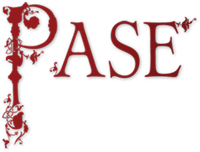Table of Contents
Top of page
Name
Summary
Distribution Map
Property List
Profile
Bibliography
Bottom of page
Gunward 1
Gunward ‘of Clungunford’ (Salop.), fl. 1066
Male
CPL
4 of 5
Summary
Gunward 1 was a second-rank thegnly landowner in the marches of Shropshire and Herefordshire, with estates assessed at over 20 hides and worth nearly £20 centred on a holding, Clungunford, which incorporated Gunward’s own name.Distribution map of property and lordships associated with this name in DB
List of property and lordships associated with this name in DB
Holder 1066
| Shire | Phil. ref. | Vill | DB Spelling | Holder 1066 | Lord 1066 | Tenant-in-Chief 1086 | 1086 Subtenant | Fiscal Value | 1066 Value | 1086 Value | Conf. | Show on Map |
|---|---|---|---|---|---|---|---|---|---|---|---|---|
| Herefordshire | 10,27 | Weston Beggard | Gunuer | Gunward 'of Clungunford' | - | Roger de Lacy | - | 6.00 | 5.00 | 5.00 | B | Map |
| Herefordshire | 9,1 | Wigmore | Gunuert | Gunward 'of Clungunford' | - | Ralph de Mortimer | - | 2.00 | 0.00 | 7.00 | A | Map |
| Shropshire | 4,20,24 | Clungunford | Gunuuardus | Gunward 'of Clungunford' | - | Roger, earl | Picot de Sai | 6.00 | 12.00 | 4.00 | A | Map |
| Shropshire | 4,3,46 | Clungunford | Gunwardus | Gunward 'of Clungunford' | - | Roger, earl | Reynold de Bailleul | 2.00 | 0.60 | 0.60 | A | Map |
| Shropshire | 4,5,6 | Choulton | Gunuert | Gunward 'of Clungunford' | - | Roger, earl | Robert fitzCorbet | 2.00 | 1.00 | 1.00 | A | Map |
| Shropshire | 6,14 | Lingen | Gunuer | Gunward 'of Clungunford' | - | Ralph de Mortimer | Thurstan 'of Wigmore' | 0.75 | 0.00 | 0.25 | A | Map |
| Shropshire | 6,23 | Brampton Bryan | Gunuuar | Gunward 'of Clungunford' | - | Ralph de Mortimer | Richard de Barre | 2.50 | 0.00 | 0.50 | A | Map |
| Totals | ||||||||||||
Profile
The extreme rarity of the name outside Domesday Book and the concentration of these estates in a small area of the Welsh borders strongly recommend the view that only one person was involved, despite the two main spelling variants. The grounds for disregarding the variants (previously regarded as pointing to two different personal names) are set out under the discussion of the name Gunward.The two parts of Clungunford clearly belonged to the same man, and all the other manors apart from lay within an 8-mile radius. The possibility that , thirty miles distant from Clungunford, belonged to a different Gunward, can be dismissed with some confidence, given the likely reach of a thegn of Gunward 1’s wealth.
The most telling indication of Gunward 1’s local importance is the fact that his central estate on the river Clun, called simply ‘Clun’ (Clone) in Domesday Book, became known as Clungunford by adding his own name as a suffix. The form Clungunford was not recorded until the 1240s, and the thirteenth- and fourteenth-century spellings in –ford show that by then the significance of the suffix had been long forgotten, the final syllable having been reinterpreted as the common word and name-element ‘ford’ (PN Salop. I, 93). For a place-meaning ‘Gunward’s part of Clun’ to have survived in local usage for almost two centuries before it was first preserved in writing, it must have been well established in 1066.
Gunward’s estate in 1066 placed him in the second rank of marcher thegns. The core of the estate, on an axis from Choulton through Clungunford to Wigmore, lay along an important north–south road through the marches, Roman in origin, with outliers a short distance to the west at Brampton Bryan and Lingen. Gunward’s lands were not quite on the Welsh frontier, but they lay near enough for his two westernmost holdings to be recorded as waste in 1066. Gunward’s part of the marches straddling the Shropshire-Herefordshire border was unusual in lacking comital or royal estates, forming a gap between the Shropshire estates of the Mercian earls and the Herefordshire estates of Earl Harold and his sister Queen Eadgyth, Much land hereabouts, including the other holding called ‘Clun’ (i.e. Clun itself) belonged to the great marcher lord Eadric the wild . Gunward must have been a junior partner of Eadric in the defence of the marches against the Welsh in the turbulent middle years of the eleventh century, and it may be significant that Lingen was held by them as two manors TRE.
Weston Beggard, Gunward’s second largest holding after Clungunford, was by no means impossibly distant for a landowner of his standing — 30 miles was a day’s journey on a good horse. It stood 5 miles east of Hereford, a location which suggests that Gunward looked to Hereford as his natural urban centre; Shrewsbury was not much further away, but his manors in south Shropshire and north Herefordshire were all in the diocese of Hereford.
There are no connections between Gunward 1’s estates and Timsbury (Som.), well over sixty miles even from Weston Beggard.
The division of Gunward 1’s properties among three great Norman lords in 1086 does not affect the identification advanced here, since the estates of Earl Roger, Ralph de Mortimer, and Roger de Lacy were not constructed on antecessorial principles.
Bibliography
PN Salop.: Margaret Gelling with H. D. G. Foxall, The Place-Names of Shropshire, 5 vols (incomplete) English Place-Name Society 62/63, 70, 76, 80, and 82 (Nottingham: English Place-Name Society, 1990–2006)
